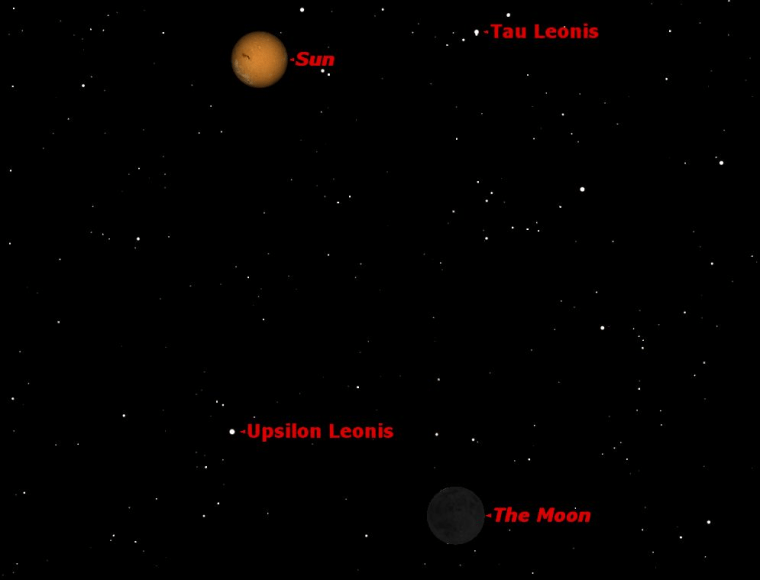Where's the moon this week? Many people are puzzled when they can't find Earth's nearest neighbor in the evening sky.
The moon's position is 100 percent predictable, literally for millions of years into the past and future, but often it's not visible where and when many people think it should be. Indeed, people who don't understand the moon 's movements have posted a flood of videos online recently.
A major puzzlement seems to be where the moon goes after reaching its full phase. After shining brightly in the evening sky for nearly two weeks, the moon just seems to vanish.
What has actually happened is that the moon has simply continued in its orbit around the Earth, taking it into the morning sky. The moon's movement around our planet causes it to rise roughly 50 minutes later each night. On the night of full moon, the moon rises in the east just as the sun sets. It rises nearly an hour later the next night, and almost an hour later again the night after that. Very soon, it is rising after most people have gone to bed. [ The Moon's Phases and Cycles (Infographic) ]
As we approach new moon, which this month occurs on Saturday, the moon shrinks to a thin crescent, which you can see only in the eastern sky just before sunrise. The moon then becomes totally invisible for a couple of days.
This happens for two reasons. First, the moon has its " dark side " turned toward us. While the far side of the moon is fully lit by the sun, the side facing us is lit only by the feeble sunlight reflected off Earth. Secondly, the faint moon is so close to the sun that it's lost in our star's bright glare.
The only time we can see the new moon is on those rare occasions when the moon passes directly between us and the sun, causing a solar eclipse.
Because the orbit of the moon is tilted about 5 degrees relative to that of Earth, only twice all year — around May–June and November–December — do the Earth, moon and sun line up perfectly. The rest of the time, as happens this month, the moon passes either above or below the sun. No eclipse occurs, and we don't see the new moon.
What lies behind people's confusion about lunar skywatching is a misunderstanding of the relationship between the sun and the moon. Many people believe that the moon dominates the night sky as the sun dominates the daytime sky. In fact, because of its orbit around the Earth, the moon spends only half its time in the night sky. The rest of the time it shares the daytime sky with the sun.
For the first half of the lunar month, as the moon waxes (grows) from new moon to full moon, the moon spends the afternoon in the daytime sky. For the second half of the lunar month, as it wanes (shrinks) from full moon to new moon, the moon spends the morning in the daytime sky.
On just one night in the whole month does the moon shine all night long: the night of full moon. On that night, the moon rises in the east as the sun sets in the west, and sets in the west as the sun rises in the east.
This next full moon, which falls on Sept. 29, is a special one: the Harvest Moon. Because of the angle of the moon's orbit, the moon shines brightly most of the night for almost a whole week, traditionally giving farmers extra light to bring in their harvest.
This article was provided to Space.com by Starry Night Education, the leader in space science curriculum solutions. Follow Starry Night on Twitter @StarryNightEdu .
